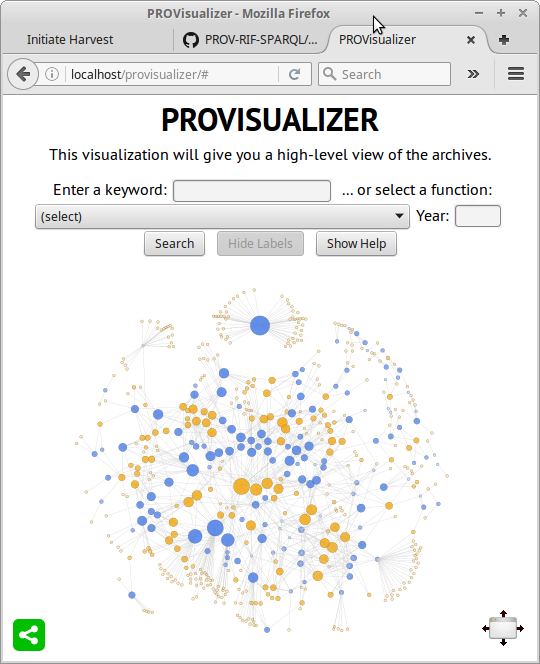Notes for my Open Repositories 2017 conference presentation. I will edit this post later to flesh it out into a proper blog post.
Follow along at: conaltuohy.com/blog/analysis-policy-online/
Continue reading Analysis & Policy Online
Tag: SPARQL
Linked Open Data Visualisation at #GLAMVR16
On Thursday last week I flew to Perth, in Western Australia, to speak at an event at Curtin University on visualisation of cultural heritage. Erik Champion, Professor of Cultural Visualisation, who organised the event, had asked me to talk about digital heritage collections and Linked Open Data (“LOD”).
The one-day event was entitled “GLAM VR: talks on Digital heritage, scholarly making & experiential media”, and combined presentations and workshops on cultural heritage data (GLAM = Galleries, Libraries, Archives, and Museums) with advanced visualisation technology (VR = Virtual Reality).
The venue was the Curtin HIVE (Hub for Immersive Visualisation and eResearch); a really impressive visualisation facility at Curtin University, with huge screens and panoramic and 3d displays.
There were about 50 people in attendance, and there would have been over a dozen different presenters, covering a lot of different topics, though with common threads linking them together. I really enjoyed the experience, and learned a lot. I won’t go into the detail of the other presentations, here, but quite a few people were live-tweeting, and I’ve collected most of the Twitter stream from the day into a Storify story, which is well worth a read and following up.
Continue reading Linked Open Data Visualisation at #GLAMVR16
Visualizing Government Archives through Linked Data
Tonight I’m knocking back a gin and tonic to celebrate finishing a piece of software development for my client the Public Record Office Victoria; the archives of the government of the Australian state of Victoria.
The work, which will go live in a couple of weeks, was an update to a browser-based visualization tool which we first set up last year. In response to user testing, we made some changes to improve the visualization’s usability. It certainly looks a lot clearer than it did, and the addition of some online help makes it a bit more accessible for first-time users.
The visualization now looks like this (here showing the entire dataset, unfiltered, which is not actually that useful, though it is quite pretty):

Continue reading Visualizing Government Archives through Linked Data
Taking control of an uncontrolled vocabulary
A couple of days ago, Dan McCreary tweeted:
Working on new ideas for NoSQL metadata management for a talk next week. Focus on #NoSQL, Documents, Graphs and #SKOS. Any suggestions?
— Dan McCreary (@dmccreary) November 14, 2015
It reminded me of some work I had done a couple of years ago for a project which was at the time based on Linked Data, but which later switched away from that platform, leaving various bits of RDF-based work orphaned.
One particular piece which sprung to mind was a tool for dealing with vocabularies. Whether it’s useful for Dan’s talk I don’t know, but I thought I would dig it out and blog a little about it in case it’s of interest more generally to people working in Linked Open Data in Libraries, Archives and Museums (LODLAM).
Continue reading Taking control of an uncontrolled vocabulary